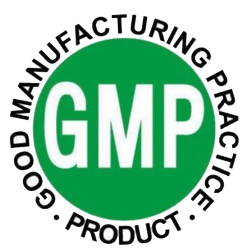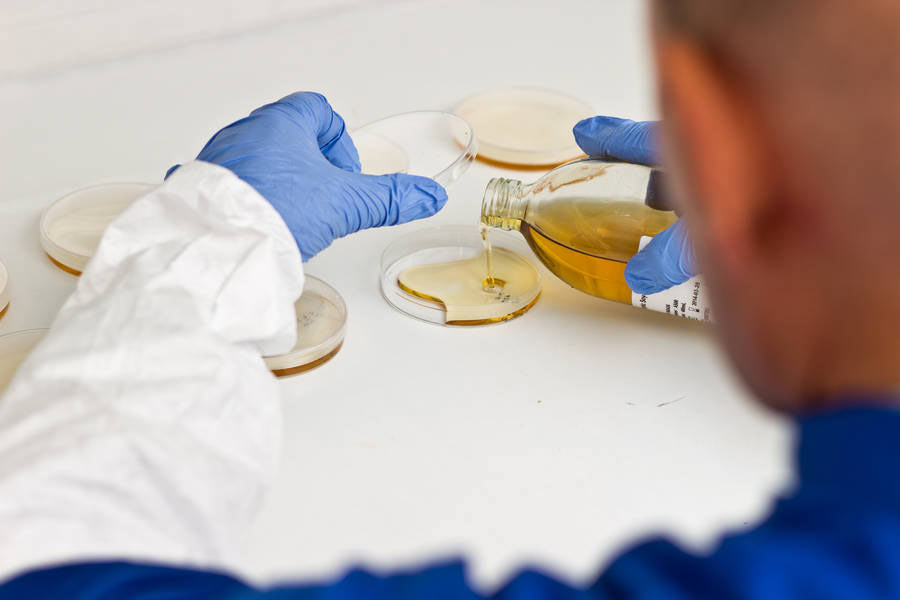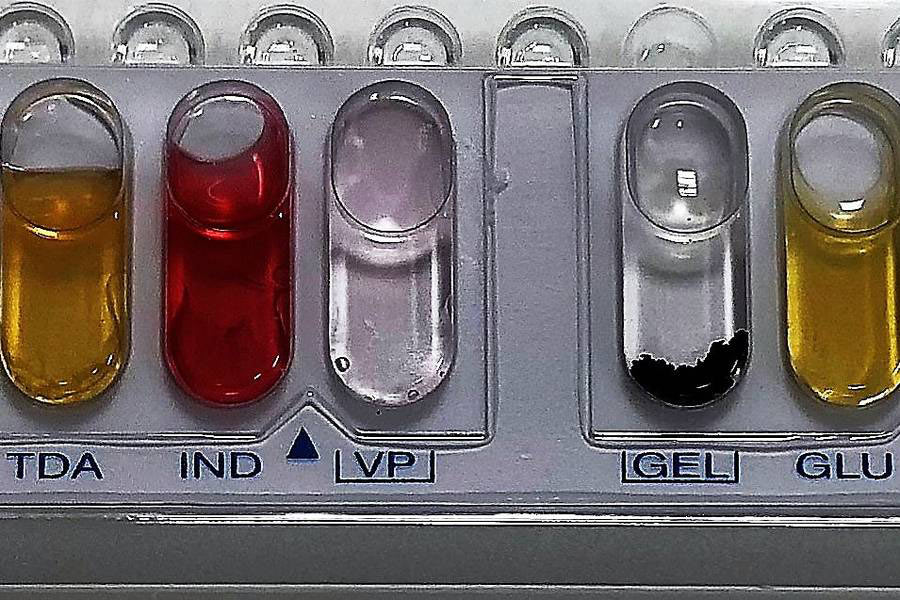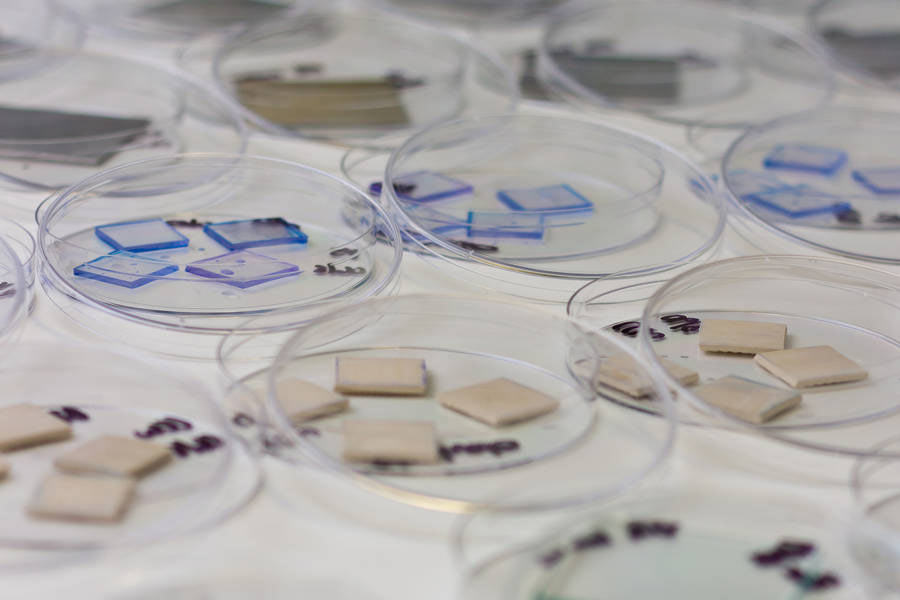Pseudomonas aeruginosa
Pseudomonas aeruginosa
Pseudomonas aeruginosa is a facultative anaerobic gram negative rod shaped bacteria that is of particular importance in the pharmaceutical and healthcare industry. It can be found commonly in the environment in soil, water and even as part of natural human skin flora.
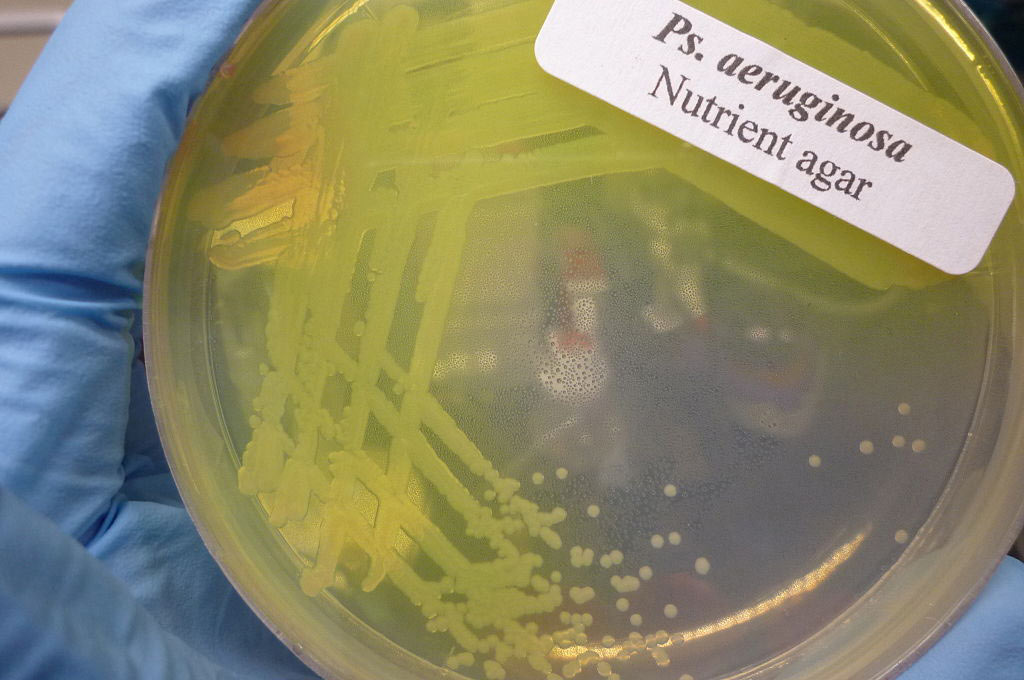
The species name aeruginosa is the Latin word for “copper rust” as a result of the green/blue colour of the organism when grown on agar. Gram negative bacteria often reside in liquids and moist environments, so are of particular importance in pharmaceutical water systems.
P. aeruginosa is a human and plant pathogen, it is largely opportunistic in nature which means infection tends to occur alongside existing illness or disease.
The species can cause serious complications in patients with Cystic Fibrosis, as it tends to colonise the thick mucus associated with the condition. Infections with P. aeruginosa are often life threatening, especially if the organism is able to colonise critical organs such as the kidneys or lungs.
As the organism tends to infect immunocompromised patients, it is essential to check for the absence of Pseudomonas in pharmaceutical finished product, water systems and hospital medical equipment. Preventing the introduction of bacteria into patients is the primary focus as treating a Pseudomonas infection can be extremely difficult. P. aeruginosa has a very low susceptibility to antibiotics through a number of biological mechanisms. One of which is the presence of multidrug efflux pumps, which are proteins that actively pump harmful molecules out of the cell. This is combined with β-lactamases that break down penicillin type antibiotics. These mechanisms, among others, combined with the already low permeability of the cell membrane, make P. aeruginosa extremely difficult to treat with mainstream antibiotics.
Another interesting biological mechanism that P. aeruginosa possesses is the ability to produce biofilm. Biofilm is an extracellular polysaccharide and protein matrix which provides an environment for large colonies to grow and thrive. These biofilms can form on organic and inorganic surfaces and can cause chronic infection (healthcare) or contamination (pharmaceutical). This is because the presence of biofilm provides protection to cells within the matrix, making infection extremely difficult to treat/remove. P. aeruginosa cells within the biofilm have been shown to communicate via quorum sensing which often upregulates the expression of known virulence factors.
From a pharmaceutical perspective, monitoring the presence or absence of Pseudomonas aeruginosa is an essential step in root cause analysis and maintenance of Pharmaceutical water quality. As a gram negative, motile organism, P. Aeruginosa can very easily colonise a poorly maintained purified water system. Biofilm build up can cause long term problems within a water system as this micro-environment often protects the organisms from many typical sanitization processes such as heat and ozone. Once biofilm is present in a system it can be extremely problematic to remove.
The best solution is to prevent the build-up of P. aeruginosa through adequate system design and sanitization. Identifying P. aeruginosa from water system samples can be a key indicator of water system health. Remedial actions typically include increased sanitisation of the system or water system engineering solutions.
Should you require any laboratory support for the microbiological monitoring of your water system, Honeyman can offer the full suite of routine TVC, absence testing and identification services. In addition, if you have an ongoing problem with your water system, our engineering team can provide consultation and carry out any remedial action as required.
Our Customers:



















